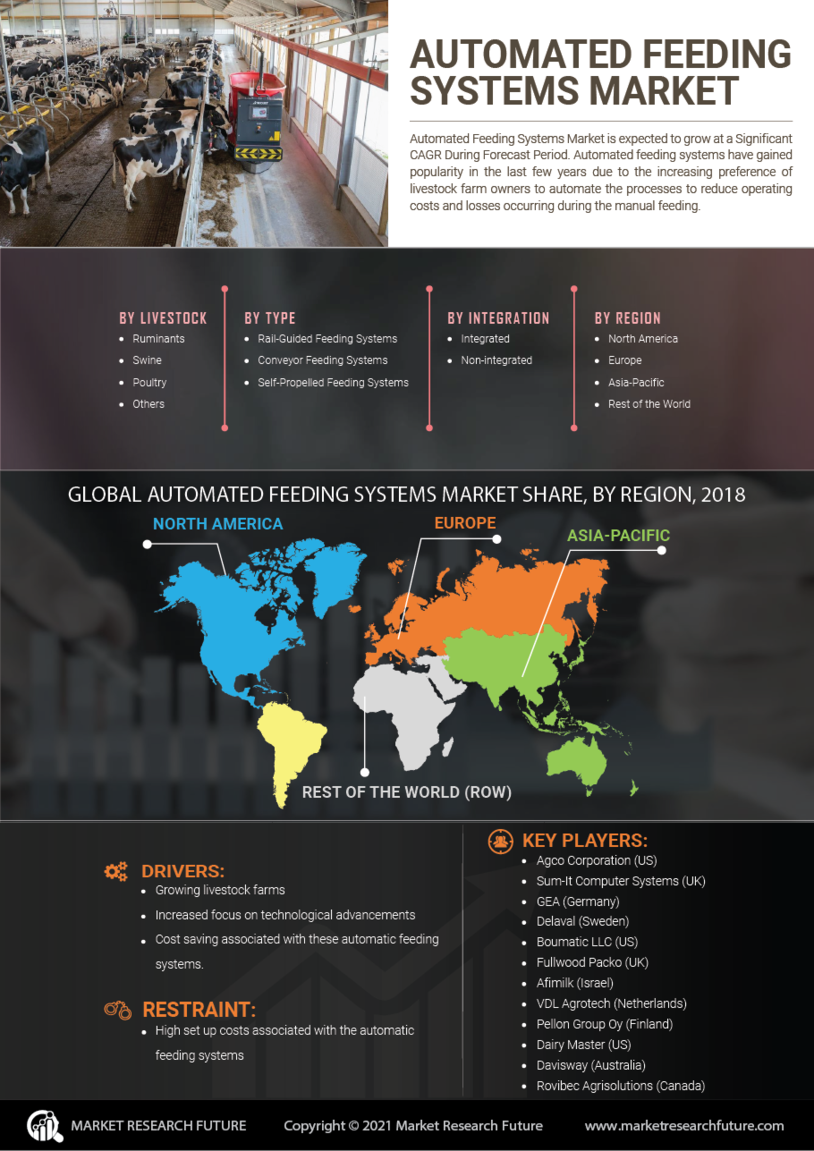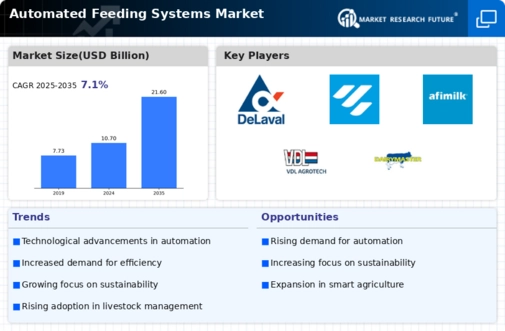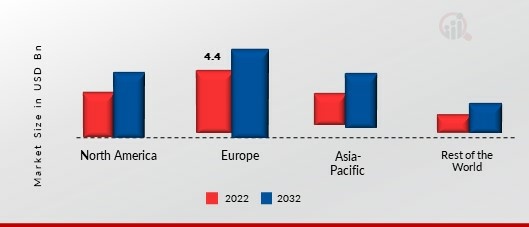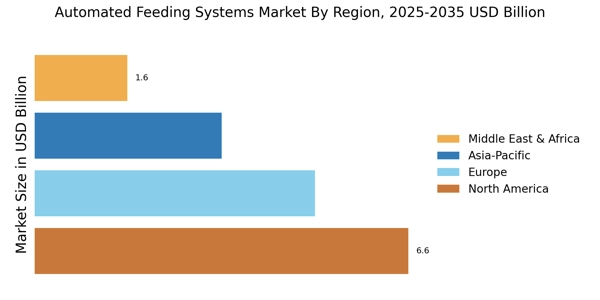Technological Integration
The integration of advanced technologies into the Automated Feeding Systems Market is a driving force behind its expansion. Innovations such as IoT, AI, and machine learning are increasingly being incorporated into feeding systems, allowing for real-time monitoring and data analysis. This technological evolution enables producers to optimize feeding schedules and quantities based on specific animal needs, which can lead to improved health and growth rates. For instance, systems equipped with sensors can adjust feed delivery based on environmental conditions, enhancing overall efficiency. As these technologies become more accessible, their adoption is expected to accelerate, further propelling the market forward.
Labor Shortages in Agriculture
Labor shortages in the agricultural sector are a critical driver for the Automated Feeding Systems Market. Many regions face challenges in finding skilled labor, which has led to a greater reliance on automation to maintain productivity. Automated feeding systems offer a viable solution by reducing the need for manual labor while ensuring that feeding processes are carried out efficiently and consistently. This shift is particularly evident in areas where traditional farming practices are becoming less sustainable due to demographic changes. As the industry adapts to these labor challenges, the adoption of automated systems is expected to rise, further enhancing market dynamics.
Rising Focus on Animal Welfare
The Automated Feeding Systems Market is significantly influenced by the growing emphasis on animal welfare. Consumers are increasingly concerned about the ethical treatment of livestock, prompting producers to adopt practices that ensure better living conditions. Automated feeding systems contribute to this goal by providing consistent and appropriate nutrition, which is essential for animal health. Research indicates that well-fed animals exhibit improved growth rates and lower mortality, which aligns with consumer expectations for humane treatment. As awareness of animal welfare continues to rise, the demand for automated solutions that support these practices is likely to increase, driving market growth.
Increased Demand for Efficiency
The Automated Feeding Systems Market experiences a notable surge in demand for efficiency across various sectors, particularly in agriculture and aquaculture. As labor costs rise and the need for consistent production increases, automated systems provide a solution that minimizes human intervention while maximizing output. Reports indicate that the adoption of automated feeding systems can enhance feed conversion ratios by up to 20%, thereby improving profitability for producers. This trend is likely to continue as more stakeholders recognize the potential for automation to streamline operations and reduce waste. Consequently, the industry is poised for growth as businesses seek to implement these systems to remain competitive in an evolving market.
Cost Reduction and Profitability
Cost reduction remains a pivotal factor influencing the Automated Feeding Systems Market. Producers are increasingly seeking ways to lower operational costs while maintaining or enhancing productivity. Automated feeding systems can significantly reduce feed waste and labor expenses, leading to improved profit margins. Studies suggest that implementing these systems can result in a 15 to 30% reduction in feed costs, which is particularly appealing in competitive markets. As producers strive for greater profitability, the trend towards automation is likely to gain momentum, positioning the market for sustained growth in the coming years.



 Source: Secondary Research, Primary Research, Market Research Future Database and Analyst Review
Source: Secondary Research, Primary Research, Market Research Future Database and Analyst Review














Leave a Comment